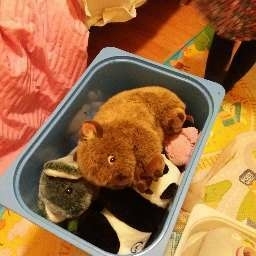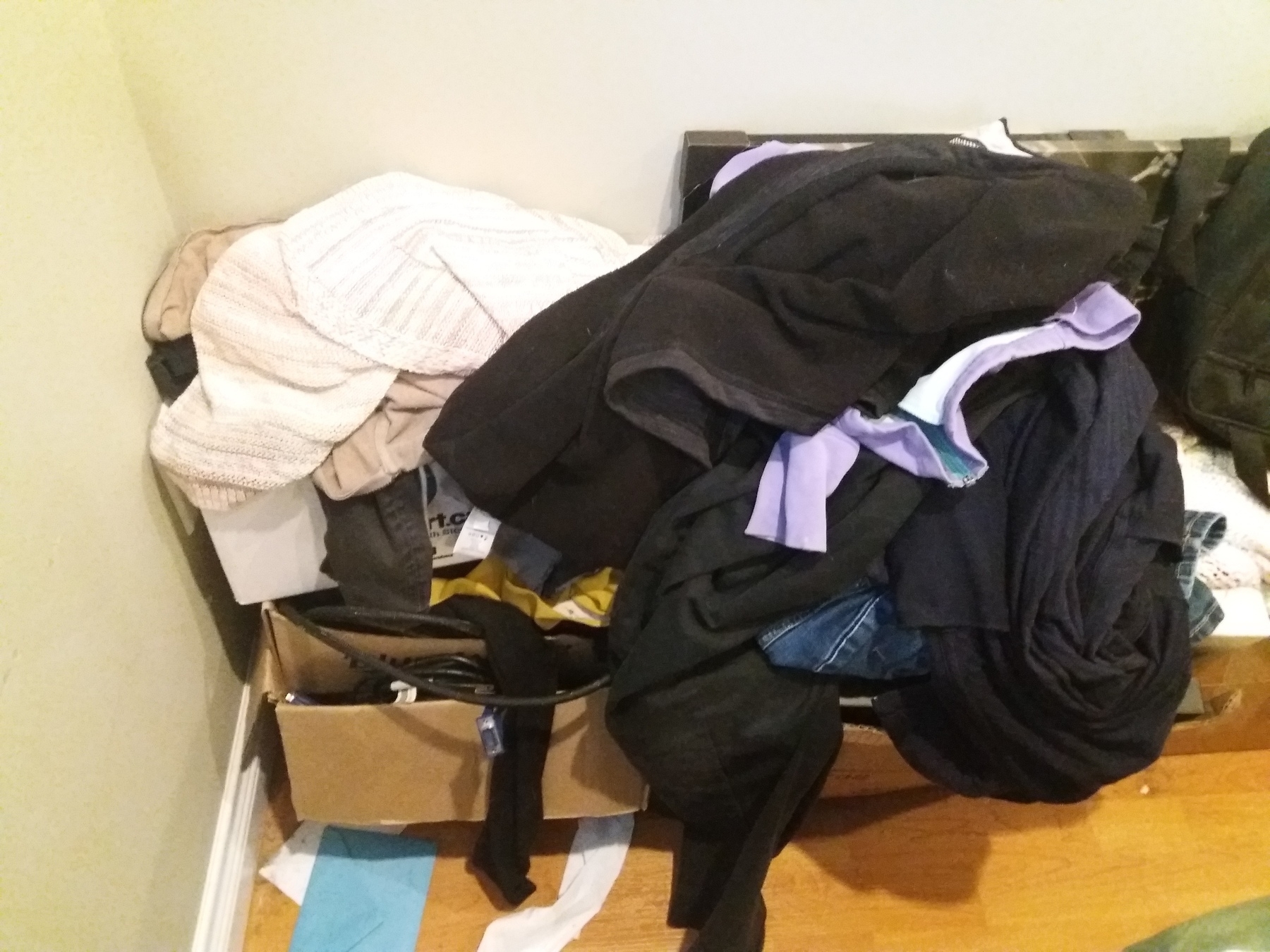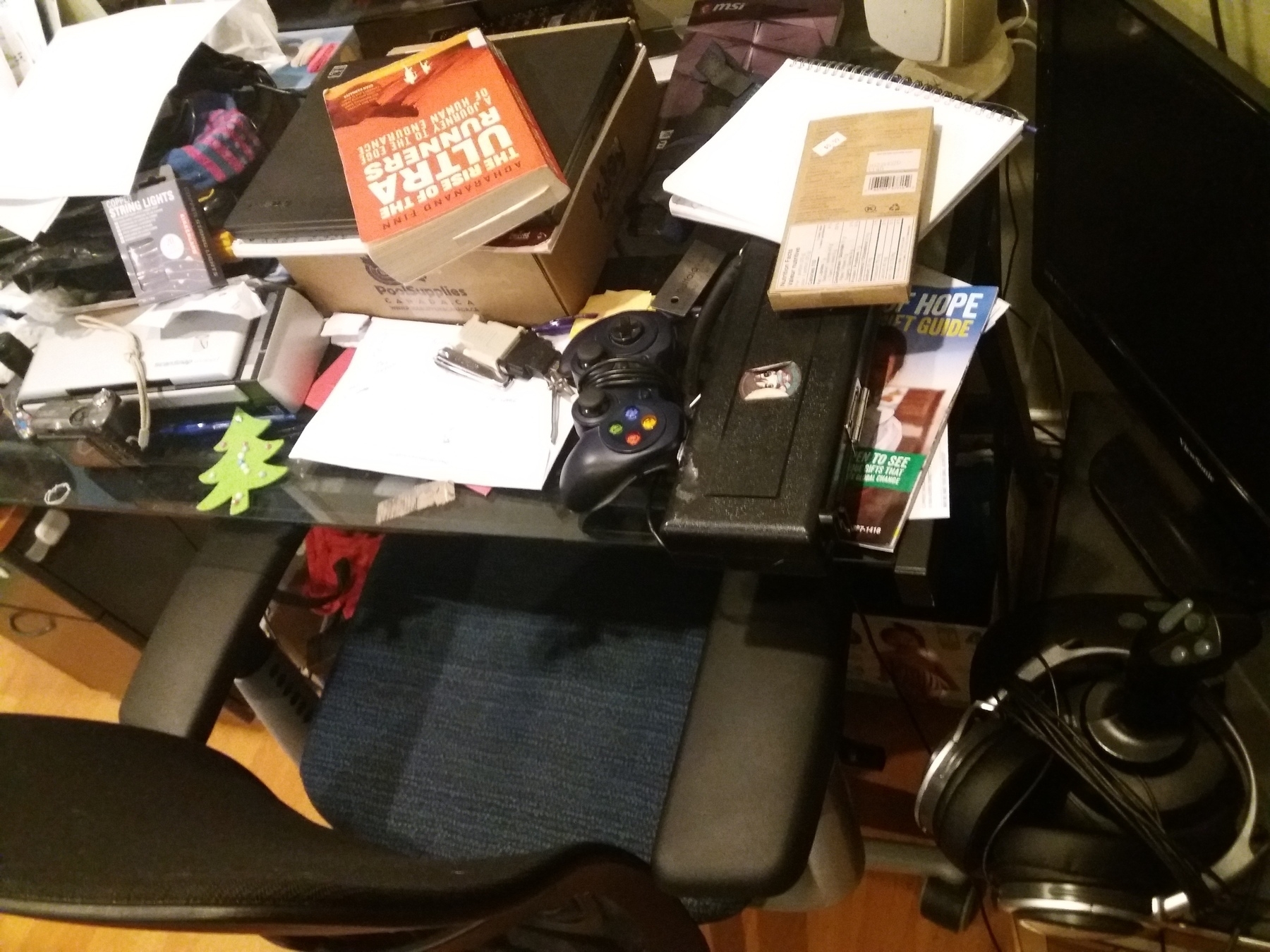Prairie Mango
Preparing to Declutter - Part 3
In Part 2, I wrote about Dana K. White’s concept of the “Clutter Threshold” from her book Decluttering at the Speed of Life 📚. Here’s another of her ideas that has been percolating in my mind: “Containers.” White suggests viewing the shelves, drawers, cubies, cabinets, and surfaces of your home as containers. The concept also applies to each room and to your home as a whole. White uses the word “container” in the sense of a thing that keeps its contents from spreading or expanding. Containers set limits. At first I didn’t find this particularly illuminating, but now that it has started to sink in, I can see the practical benefits, with my own home in mind. As I understand it, the idea can be used as a rule of thumb for determining how much stuff is too much stuff. It can help with otherwise difficult decisions of how much to keep and what to give up.
“Accept the limitations of the space you have,” as White puts it, “and declutter enough that your stuff fits comfortably in that space.” For example, when a shoe rack is seen as a Container, it limits the number of shoes you have. The maximum number of shoes you keep is determined by the number of shoes that fit nicely on the rack. In my house, our family’s shoe rack is definitely not Containing our shoes. We treat it more as an area to pile shoes on top of and around. If I were asked to solve our shoe clutter, I would be tempted to buy an additional shoe rack. But this would only exacerbate the problem. Our kitchen serves many functions for our family, including a place for cooking, eating and playing. Holding shoes is not one of the primary purposes of the room, and that is why our shoe rack needs to keep our shoes confined to a reasonable area.
This was definitely a helpful shift for me to start considering our home as not only a container for our belongings but also a space for our family to live and play. Of course, I knew that already in a sense, but I didn’t apply the concept directly to decluttering. Yes, we need some counter space in our kitchen to hold our toaster and dish rack. But we also need uncluttered counter space for preparing meals. I was reminded of the Container concept yesterday when our family was listening to some lovely Christmas music and we had an impromptu dance party in the living room! These joyful moments together are something we need as a family, not more toys and boxes crowding the floor and limiting our movement. In other words, our family can choose to limit and contain our belongings so that we have the freedom to take up more space. That means less irritation and more playing, dancing, and laughing together. If nothing else, that’s an idea that can motivate me through the decluttering journey ahead.
Whoo! My daughter spontaneously started picking up her stuffed toys off the floor and putting them in a bin. I’m not officially starting my decluttering marathon until January 5th, but I’m already seeing some positive changes by just talking about it and cleaning up more.

Here’s where I keep the clothes I want to re-wear before washing: on top of a box of my daughter’s old clothes, on top of a box of other clothes, on top of a box of random electronics (plus a box of picture frames and paintings). Decluttering, here I come!

Voila! Exhibit A of my need to declutter! This is my computer desk. Why is there a flute, a sock, a truck, and a bug net on it? Hard to say. On the plus side, looking at this photo helped me locate my lost ruler!

Preparing to Declutter - Part 2
The first nine chapters of Dana White’s Decluttering at the Speed of Life address beliefs and attitudes toward decluttering. I’m glad that she takes the time to focus on this because I’m convinced mindset matters more than almost anything when it comes to behaviour change. In these chapters, White also tells her story of living as a (self-proclaimed) slob.
As for my own story, I intend to share more as I go along but for now, I’ll just say that this has been a challenge for me since I was a kid. I remember my mom not wanting me to have friends over to the house because she was worried about the mess. We only had guests over once or twice a year, and the cleaning spree that went into preparing for these rare events was exhausting for everyone. As much as I hated that as a kid, now that I have my own family and my own home, I’m finding myself in my mom’s position with a messy home and a lot of anxiety about having anyone see it. I have never once lived in a space that I felt good about inviting others into. I’d like for that to change. Maybe it seems like a low bar to some, but from where I’m currently standing that bar seems really far out of reach.
Speaking of bars, the most eye-opening thing for me so far in the book is the author’s concept of the “Clutter Threshold… the point at which stuff becomes clutter” in one’s home. She claims that everyone has a different threshold, and once you bring your stuff down under that threshold (through decluttering), your stuff will be significantly easier to keep under control. I definitely like the sound of that! However, I suspect I might find out that my clutter threshold is very low. I like to think of myself as a minimalist even though it’s completely at odds with my reality. But maybe the idea of minimalism appeals to me because I do better with less stuff. And maybe I do better with less stuff because I simply can’t handle more. I’m hoping to explore this idea more in practice once I get going with my decluttering in earnest.
Well, I wasn’t planning to start decluttering until January but, while my 3-year-old was having a bath this afternoon, I managed to clear away a lot of junk from my bathroom counters! There were empty bottles and bags, toy cars, crayons, and even a few bottles of gouache paint taking up space that is now inhabited by a few items that actually contribute to the purpose of the bathroom. I’ll try to post some pictures later.
Preparing to Declutter - Part 1
In preparation for decluttering my home in January, I’m starting to read Dana K. White’s Decluttering at the Speed of Life. Here’s my favourite piece of the prologue:
I’ve learned how to get rid of things even though I wanted to keep them all. I’ve learned to like living my life with only things that make it better. I’ve consciously decided to view my home as a place to live instead of a place to store all my great ideas and their attached stuff.
Yup, seeing my home as a place to store my future plans has been a major barrier for me when I’ve tried to declutter in the past. Getting rid of things sometimes feels like getting rid of my hopes and dreams. For example, it’s hard not to keep my enormous box of yarn, fiberfill and crochet hooks. One day, I hope to start crocheting again. Even though I haven’t opened it in over 5 years and know I’m not about to start crocheting any time soon, it’s still tough.
My daughter M’s first knock-knock joke:
M: Knock knock.
me: Who’s there?
M: Frog.
me: Frog who?
M: Frog, peekaboo! …no, frog peekaPOO!
Coming 2022: Clutter-Free Space
Blog series idea for January 2022: Tracking my decluttering progress (or lack thereof, we’ll see). One of my top priorities for the new year, right behind “writing,” is decluttering. I’ve had trouble with clutter for as long as I can remember. It adds to the stress of life - almost every time I go out I am delayed because I can’t find something in the mess. I’m embarrassed to invite friends and family over. I’d love to have less stuff and buy less as well.
The book I hope will guide me through the process is Decluttering at the Speed of Life: Winning Your Never-Ending Battle with Stuff by Dana K. White 📚. I’ve read Marie Kondo’s The Life-Changing Magic of Tidying Up, and really enjoyed it. I was able to make some significant progress on the categories I tackled (clothes and books). But I’m still barely able to see the surface of my desk or the top of my coffee table. I’m hoping that Dana White’s book will hold my hand through the process.
Sorry for Apologizing So Much
Something I’ve noticed in recent months is my daughter’s use of the words, “I’m sorry.” She’s 3 and she uses the phrase both too often and not often enough. She will say, “Sorry, mama!” for no discernable reason. And then she will refuse, at first, to apologize when an apology is asked of her (e.g. when she hits someone).
Not apologizing for hitting is something I can work with - we take a break together in her Calming Corner and we talk about her feelings and the feelings of the one she hit. (By the way, this is a strategy that replaces “time outs.” I learned about it at Generation Mindful: genmindful.com). Sometimes she was feeling upset because of something else that happened recently, sometimes she was feeling ignored, sometimes she was just over-tired. She always agrees to apologize after calming down and talking about it.
But the problem of her apologizing for no reason feels like a bigger hill to climb. Specifically, it touches on something I’ve struggled with since I was very young. I’ve always been an over-apologizer. My sister is too (she lives with us as well). We both constantly apologize for saying “the wrong thing,” for talking “too loud,” for talking “too much,” for standing where someone else is going, for inconveniencing anyone in any way, and the classic: apologizing for apologizing too much. Apologizing for everything reveals how we feel about ourselves. We learned as kids to keep ourselves small and to not take up too much space in the world.
I don’t want my kid to feel she needs to apologize for existing (or existing in a way that others might not like). And I think that will start with me teaching by example. There’s a lot here to explore. In a future post, I hope to delve a bit deeper.
Tell Me a Frog Story
I’ve discovered a cool trick for quickly improving my storytelling skills: Having a 3-year-old! Every evening for the past few months, I or my husband will conjure up a new bedtime story for our daughter. Almost always, she has parameters: “I want a bird story,” or “I want a story with Lightning McQueen.” (This child has never seen the Cars movies, but she is nonetheless a huge fan.) Today, I told her a story about rainbow-coloured frogs and the friendship they have with a friendly grizzly bear (and Lightning McQueen). It’s fun!
As an inexperienced writer trying to establish a regular writing practice 📝, these bedtime stories have been the perfect chance to stretch my imagination and test out what makes a story engaging. I’m reminded of the times when, as a child, my imagination would pull me into a different world. There was this mystical feeling of inhabiting another dimension. And then there’s the feeling of seeing my own child get caught up in the story too.
I’m not sure how long she will continue to request and enjoy these off-the-cuff bedtime stories, but I’m grateful for this opportunity.